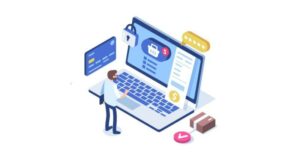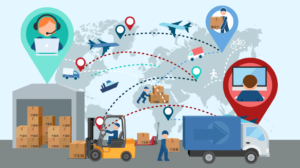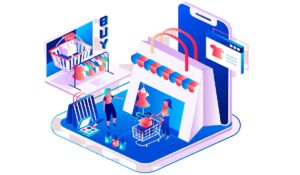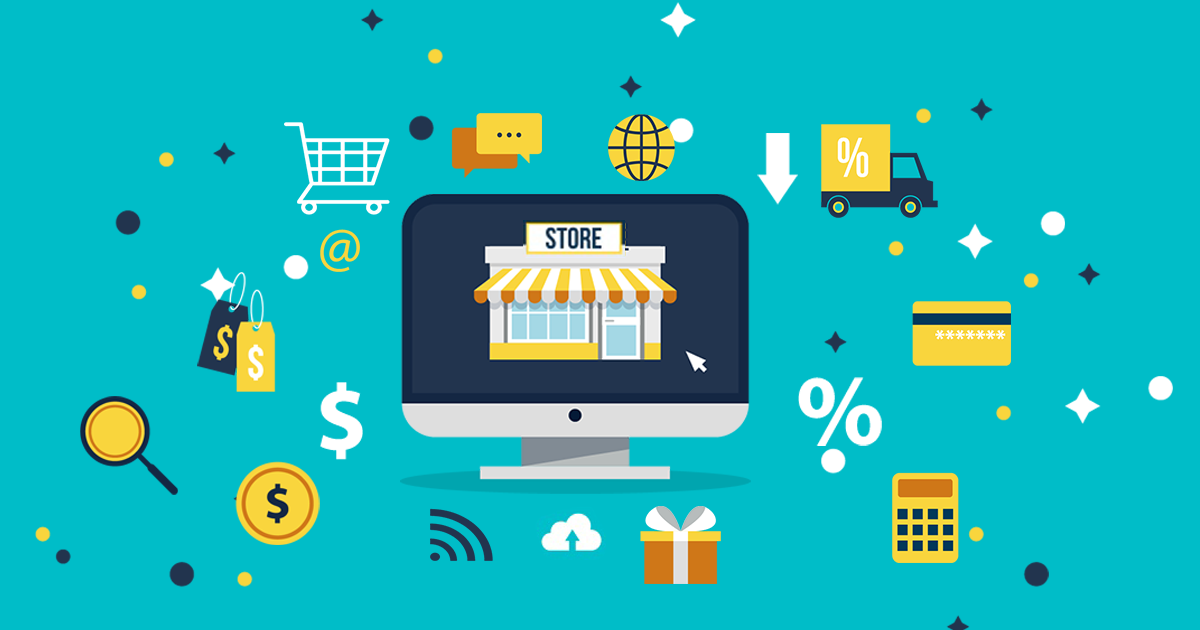E-commerce and logistics are the best solutions for your business because the COVID-19 pandemic has created a simple yet devastating challenge for almost every business across the world: ADAPT OR GO EXTINCT. From cars being launched virtually, to street-side vendors accepting digital payments to avoid cash, the pandemic has forced everyone to adapt to technology and every business to accept digitization.
Without a doubt, the sector that was most tested for its resilience and endurance was the logistics and supply chain sector. From delivering products and goods to the customer’s doorstep to evolving its capabilities to deliver vaccines in a controlled environment to countries around the world, it has become the lifeline for almost every economy in the world.
The better and faster logistics companies started adopting digitization through e-commerce with more businesses relying on them for their survival. Hence, it is not an exaggeration to say that the small percent of businesses who survived the disruption brought on by the pandemic survived thanks to their ability to adapt to the new supply chain innovations and go online through an e-commerce platform.
1. E-commerce adoption
A recent survey by the Organization for Economic Co-operation and Development (OECD) on the role of e-commerce in COVID-19 times, has given significant insights into the consumer acceptance of e-commerce in developing countries across the world. The major drivers of this boom were:
- The government imposed policies (Lockdowns and restrictions)
- Individual’s concern for safety
These drivers were catalyzed by the massive adoption and availability of Telecom-based internet services in every nook and corner of the country. 4G and 3G availability and ease of using mobile apps on a smartphone have made it super convenient for every user to avail the convenience of shopping from home.

E-commerce adoption in COVID-19
2. A few key takeaways about E-commerce industry from the OCED report
The COVID-19 crisis accelerated the expansion of e-commerce solutions for new firms, customers, and types of products. It has brought a significant variety of products to the consumer’s doorstep. All these from the convenience and safety of their homes, have enabled firms to continue operating despite contact restrictions and other confinement measures.
Although there are several cross-country differences, the COVID-19 crisis has enhanced dynamism in the e-commerce landscape and expanded the scope of e-commerce, including through new firms, consumer segments (e.g. elderly) and products (e.g. groceries). Meanwhile, e-commerce businesses that used to cater to luxury goods and services have now partly shifted towards everyday necessities that are relevant to a larger number of individuals.
These changes in the e-commerce adoption rate will likely be of a long-term nature. This is in light of the possibility of new waves of the epidemic, the convenience of the new purchasing habits, learning costs, and the incentive for firms to capitalize on investments in new sales channels.
It is clear that the effects and habits that come from e-commerce shopping such as convenience, safety, and range of products to choose are hard to let go of. Hence, it is safe to declare “E-commerce is here to stay”.

Effects and habits from E-commerce shopping
3. Logistics
The logistics business was another business that was challenged head-on by the pandemic. There were restrictions not only among countries but different states, provinces and even areas among cities had restrictions making it difficult for products to reach the end customers.
There were scenarios where warehouses that were digitized saw stock deplete quickly as opposed to the traditional warehouses where the stocks piled up and rotted because of lack of manpower and movement restrictions.
The demand surge for essential products made some manufacturers scramble for suppliers and raw materials while other retailers saw their demand completely stagnate or worse, wiped out in its entirety.
But luckily, it gave a boost to 3 new phenomena:
- Hyperlocal delivery
- Third-party supply chain businesses
- Dark stores
All these are aided of course by cloud-based platforms, mobile apps, and e-commerce websites. Because the third-party supply chain companies started to take orders digitally, they became a more reliable choice to aid retailers to continue doing business from home or during curfew hours.
Shops can now focus on selling during their actual business hours. This convenience made sure that third-party supply chain companies grew by 2-3 times since the COVID-19 lockdown. Not just essential services or FMCG goods, but consumer durable and apparel retailers are using their services to serve their customers.
Dark stores are traditional retail stores that have been converted to local fulfillment centers. The beauty of digitization is that it connects all the pieces required for you to become an online fulfillment center. There are several third-party platforms where you can simply register and maintain your stock availability to become part of a larger e-commerce ecosystem. We will explore the same in the next section.

The logistics businesses converted
4. How can businesses take advantage of e-commerce and logistics?
As social distancing is limiting the number of customers that can come into your physical store, moving to a digital platform to handle your customers is the way to survive. There are two ways around this challenge, one is for the customer to pick up their order from the storefront or to deliver the order. Many local stores are using messaging apps such as WhatsApp or Telegram to take such orders but these apps come with many limitations in terms of stock-keeping and order tracking. These limitations can hinder business prospects.
Several cost-effective cloud-based platforms offer end-to-end services to make sure your business runs effortlessly with minimal human intervention. From stock ordering, stock keeping, taking online orders and tracking orders. What’s more, your platform can also integrate with a third-party supply chain so that you will get notified in case an item is depleting and place an order with a single click. This way you can never run out of stock, you never have to have a sorry face in front of your customers for double booking, and never lose track of your order.
You can also tie-up with a hyper-local or last-mile delivery app to fulfill your deliveries!
Many businesses across the western world have survived the disastrous effects of the pandemic by going digital and investing in e-commerce development. The pandemic has accelerated the process of digital adoption by almost 3-5 years and only those who have adopted survived! It has brought several innovations that are enabling retailers of all sizes to not just stay afloat but thrive in the pandemic. It is time for you to make a smart move, from being a human-intensive business to a digital-intensive business. Experts at Kyanon Digital have helped several retail businesses across Vietnam and Singapore expand their presence multi-folds in the past year and a half. They took advantage of the restrictions that the pandemic has brought in and used it to their advantage.

Businesses take advantage of these innovations
Make a smart decision and partner with an outsourcing development company who is just a phone call away! Reach out to us and we will turn your challenges into opportunities.
MAKE SURE TO ADAPT TO PREVENT YOURSELF FROM GOING EXTINCT!


